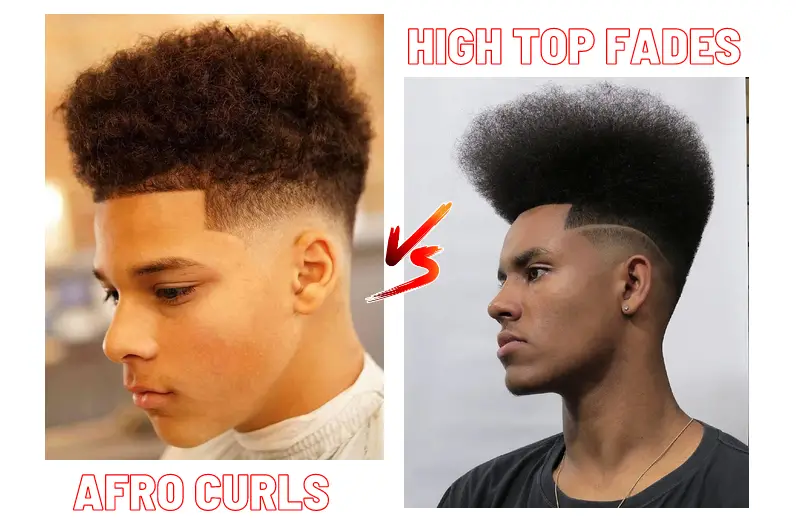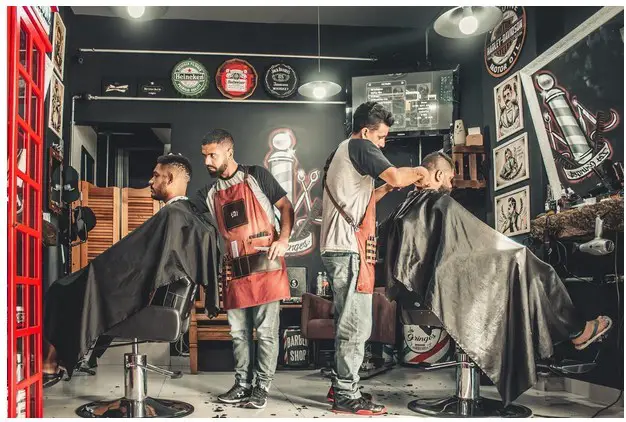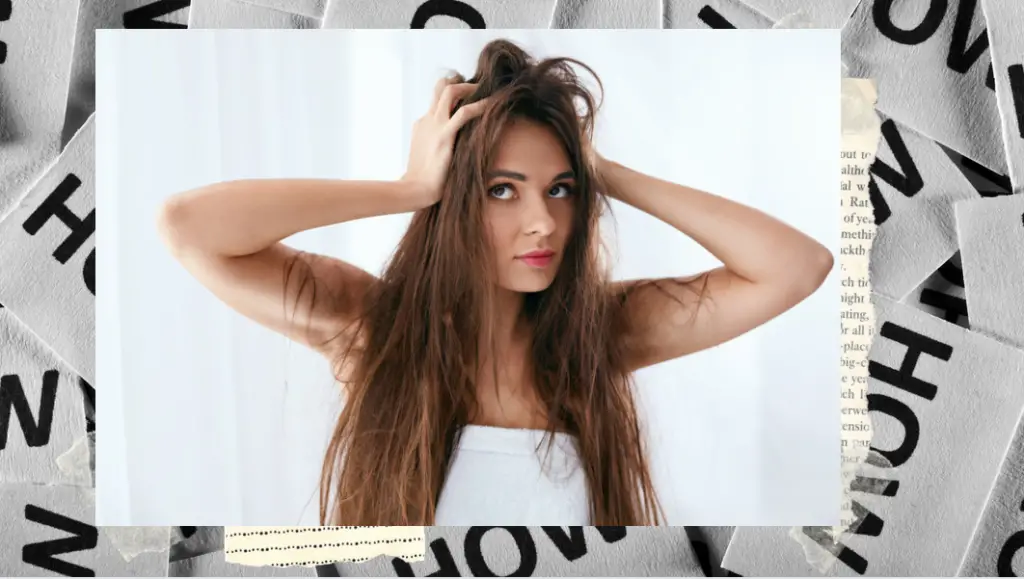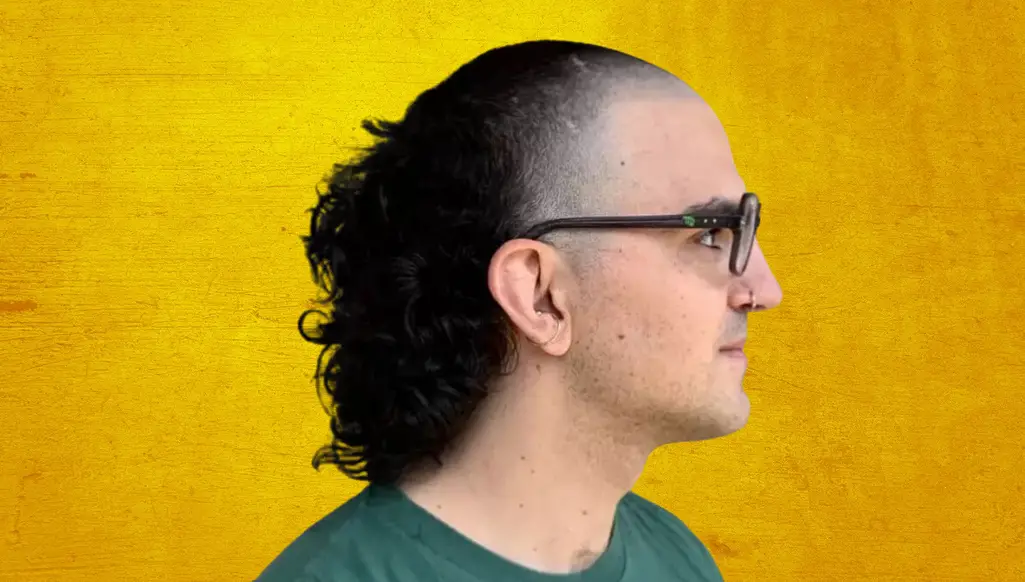What’s the difference between Afro curls vs high top fades? We break it down for you in this blog post!
Immersing into the rich tapestry of African-American hair culture promises an enlightening journey. This narrative is not simply about aesthetics or fashion trends, but it is a compelling story of identity, resilience, and influence. Among these cherishing narratives, Afro curls and high-top fades stand as two prime examples. These iconic hairstyles have not just shaped African-American appearance, but have made empowering statements and inspired movements. The captivating history and cultural significance of Afro curls, the symbolic high-top fade, and the comparative analysis of the two, serve to create a vivid picture of African-American hair culture in the past and present.
History and Cultural Significance of Afro Curls
Origins and Evolution of Afro Curls
Afro curls, often just referred to as “afro”, trace their roots back to sub-Saharan Africa among people with densely packed, tightly curled or coiled hair. In the African-American community, sporting afro curls emerged predominantly in the 1960s and early 1970s. This was a time when the Civil Rights and Black Power movements galvanized African-Americans to reject social norms imposed by a predominantly white society. As a result, the afro hairstyle became a symbol of rebellion, pride, and cultural resurgence.
What’s interesting is that the iconic round afro hairstyle we associate with the 60s and 70s was not how these hair types naturally styled themselves in traditional African communities. In traditional African societies, various regions had distinct, intricate hairstyles that were far from the round afro.
Cultural Significance of Afro Curls
The afro hairstyle played a significant role in transforming the political landscape in the U.S and even globally. It was a symbol of resistance, unity, and black beauty amid rampant racial discrimination and widespread social unrest.
Prominent figures such as Angela Davis, a political activist, and musician Jimi Hendrix, started to wear their hair in an afro as an act of defiance and to show solidarity with their African roots. This hairstyle thus began to be synonymous with the fight for civil rights and the counter-culture movement of the time.
In the music industry, artists from the Motown era adopted the afro hairstyle, leading it to become a major trend in fashion in the late 20th century. The afro quickly infiltrated mainstream fashion magazines and homes through television.
The High-Top Fade Emerges
As the 1980s arrived, the afro started to evolve into variations like the Jheri curl and the high-top fade. The high-top fade combined elements of the traditional afro and a more “European” aesthetic by creating a flat top surface. It was elevated to popularity by hip-hop culture, with figures like Will Smith and Kid ‘n Play popularizing the style in the late 1980s and early 1990s.
Afro Curls vs High Top Fades
Afro curls and high-top fades represent different cultural contexts and periods in history. The afro symbolized Black Power and a rejection of Eurocentric aesthetic norms while the high-top fade emerged as a softer, contemporary iteration that was partly an attempt to accommodate mainstream societal standards.
While the afro became a potent symbol of black resistance, the high-top fade was tied to the hip-hop movement, embodying a more playful, fashionable youth culture. However, it too was a symbol of Black pride and culture, just set in a different era and context.
Current Cultural Relevance
Both high-top fades and afro curls have recently experienced a revival, symbolizing Black pride, identity, and the celebration of natural hair. Authentically representing the Black community, these hairstyles have been acknowledged and appreciated in daily life, pop culture, politics, and fashion industries. Consequently, this has stirred enriching conversations regarding race, identity, and beauty, challenging societal standards.
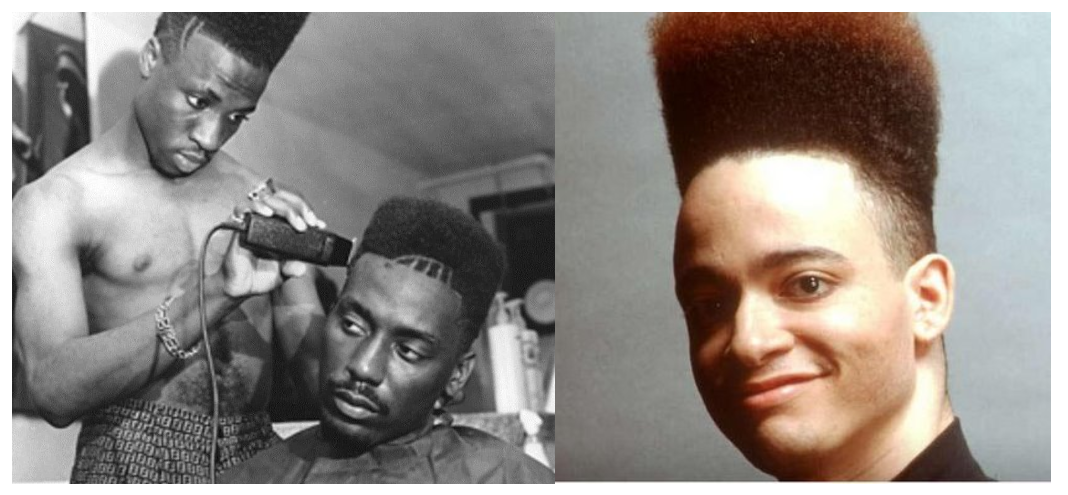
The High-Top Fade: Culture, Symbolism, and Influence
The Birth of High-Top Fade
The urban style of the high-top fade, better known as a Hi-Top Fade, traces its roots back to the Black community of the late 1980s and early 1990s. A unique hairstyle which involves trimming or curling the hair on the sides and back of the head, and crafting the longer hair on top into a defined ‘high-top’ shape. This particular style became a definitive part of hip-hop culture, fueled by the likes of influential figures like the rapper Big Daddy Kane and the popular actor Will Smith, notably in his role in “The Fresh Prince of Bel-Air”.
Cultural Significance of the High-Top Fade
The high-top fade became more than just a hairstyle; it was a political and cultural statement. In a time of cultural revolution within the Black community in America, the high-top fade was a sign of Black pride and was often associated with the Afrocentric movement. The style, along with its variations, became emblematic of the era’s music, fashion, and resistance culture.
Comparison: High-Top Fade versus Afro Curls
On the surface, both high-top fades and afro curls appear to be a hairstyle choice. However, they represent more profound implications in terms of culture and identity. Afro curls, first popularized during the Black Power Movement of the 1970s, saw a resurgence in the late 2000s, aligning with the renewed emphasis on natural Black beauty. Afro curls are free, unrestricted, and untrimmed, symbolizing resistance against Eurocentric beauty standards and affirmation of Black ethnic heritage. While the high-top fade also projects a similar sentiment, its more stylized, vertical dimensions exude a distinct representation – a blend of traditional African heritage and modern urban influence.
Influence of Notable Figures on the High-Top Fade
Undoubtedly, the high-top fade wouldn’t have gained the popularity it did if not for the influence of notable figures. Many musicians, athletes, and actors have sported this iconic haircut, continually bringing it into mainstream consciousness. Some of the most memorable modern high-top fades were worn by basketball player Iman Shumpert and musician Kid Cudi. Their endorsement helped to cement the high-top fade as a trend within not only the African-American community but also global fashion.
Resurgence of the Stylish High-Top Fade
Steeped in cultural and political symbolism, the high-top fade has transcended borders and emerged as a style icon that holds significant influence in global fashion. While the roots of this hairstyle can be traced back to the Black community, its popularity has transcisted cultural boundaries, making it an appealing hairstyle option in various ethnic groups. Having made a comeback in recent years, the high-top fade has found its way onto fashion runways, music videos, and city streets, standing as a stylish tribute to the past and its cultural heritage.
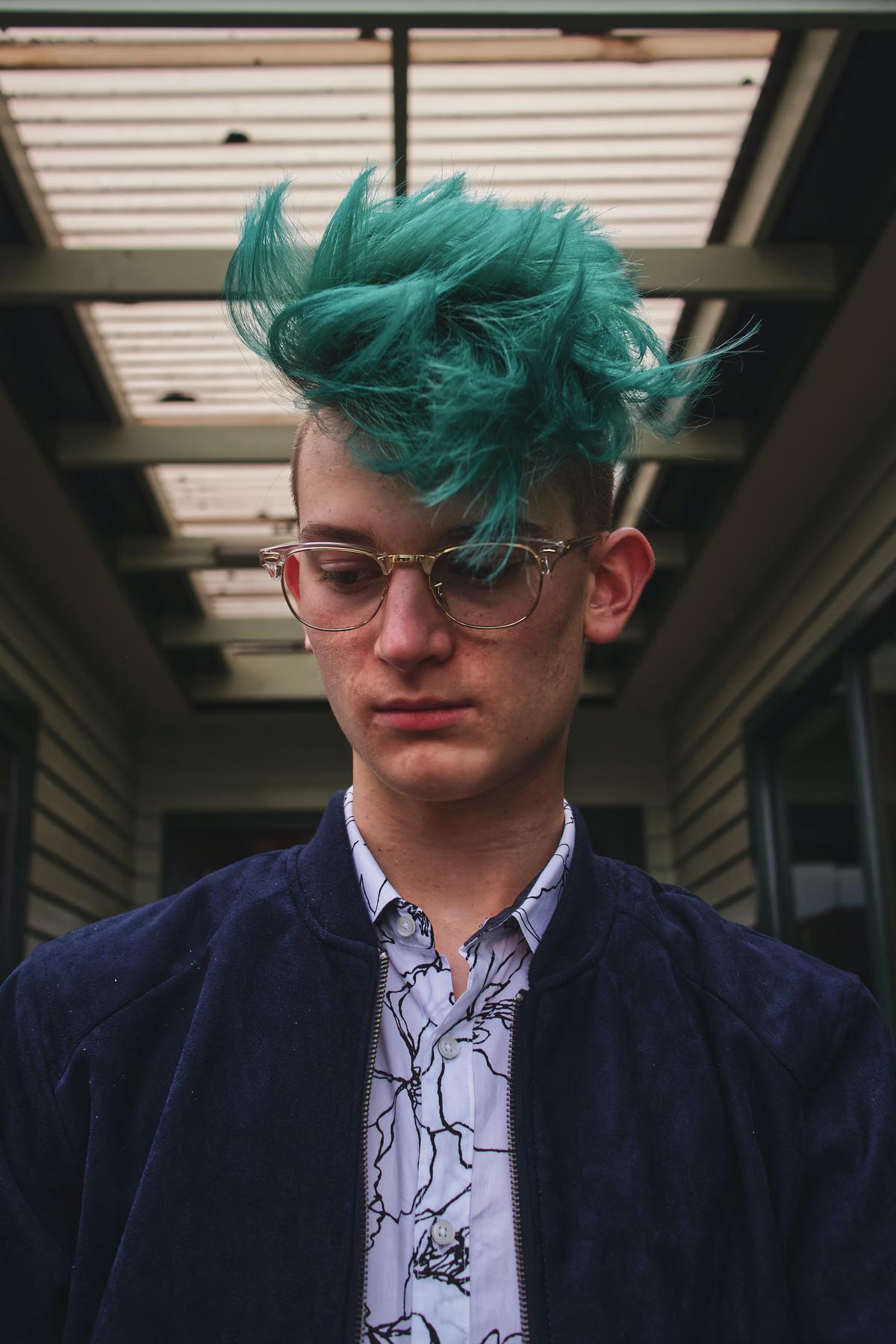
Photo by botanicalnature on Unsplash
Afro Curls and High-Top Fade: A Comparative Analysis
Afro Curls: Celebrating the Beauty of Natural Hair
The Afro curls style, a display of the natural texture of hair among individuals of African descent, came into prominence during the Afrocentric movement in the 1960s. Designed to celebrate the natural beauty and adaptability of these hair textures, the Afro curls can be formed into a wide variety of styles, such as being worn loose, braided, twisted, or moulded according to the wearer’s preference. The characteristics that make Afro curls so unique include their tight, kinky, and coiled curls that contribute to its distinct volume and shape. The hair care routine of Afro curls can differ greatly, largely reliant on the specific hair type and individual needs. It commonly involves an emphasis on regular moisturization and gentle handling to reduce breakage and maintain the integrity of the curls.
High-Top Fades: A Blend of Old School and Modern Trend
The High-Top Fade or High Top Curls Fade well-known in the 1980s and ‘90s, was a popular hairstyle characterized by a tight fade on the sides and back, with significant length maintained on the top. It rose to prominence during the ‘Golden Era’ of hip-hop, widely worn by artists, athletes, and the public alike. It presents a more structured and sleek look compared to the Afro curl. The style recently made a comeback, becoming a modern trend integrated easily into the hip, street-style fashion.
Maintenance of the high-top fade requires regular barber visits to maintain the sharpness and definition of the fade. It’s crucial to balance the contrast between the faded sides and the voluminous top. Again, like Afro curls, hydration is also key, given the naturally dry texture of Afro hair.
Afro Curls vs. High-Top Fade: Making the Choice
The choice between Afro curls and a high-top fade may come down to personal preference, lifestyle, and the specific fashion look one aims to achieve. Afro curls present a naturally voluminous look and are versatile in styling. They are reliant more on regular hair care maintenance rather than frequent barbering. Afro curls can be a statement style, representing naturalistic and Afrocentric expressions.
On the other hand, the high-top fade portrays a blending of old-school cool with contemporary edginess. It involves more barbering for upkeep but can offer a structured, standout look. This style is often associated with individuality and may appeal to those opting for a sharper, more distinctive style.
Cultural Conversations around Afro Curls and High-Top Fades
Both Afro curls and high-top fades hold significant cultural and historical significance within the Black community. Their rise and popularity reflect the themes of Black identity, culture, and self-expression. These hairstyles, while different in approach, represent the diversity, power, and creativity inherent in Black hair and culture. Both styles have driven conversations about cultural representation, identity, natural beauty, and equality. The styles’ modern iterations continue to drive discussion about black hair expression, its versatility, and the influence of black hair trends globally.
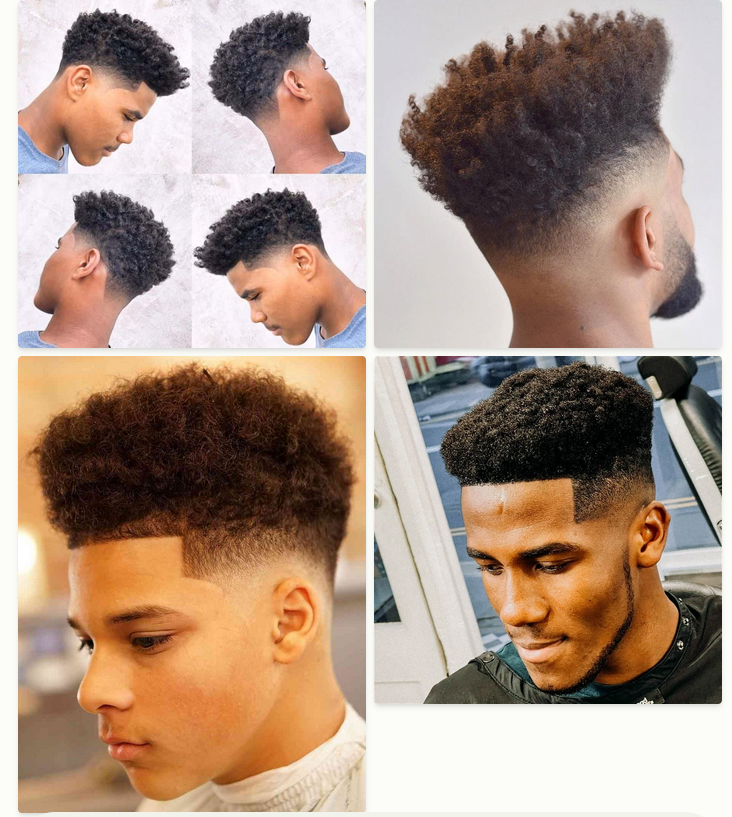
African-American hairstyles like Afro curls and high-top fades do not merely cater to fashion or style. These hairdos are intensive reflections of identity, rebellion, and homage to the rich cultural heritage. When choosing between these hairstyles, one needs to take into consideration the historical, cultural, and social significances attached to each. Undoubtedly, these iconic hairstyles will continue to hold their ground in times to come as they evolve to echo the ever-changing narratives of African-American culture and identity.
- AI Powered Bald Filter Online 2024: See Yourself with No Hair! - January 19, 2024
- Harklinikken Bad Reviews 2024: Analyzing Negative Feedbacks - January 18, 2024
- How to Get the Alex Eubank Hair | Step-By-Step Tutorial 2024 - January 18, 2024

